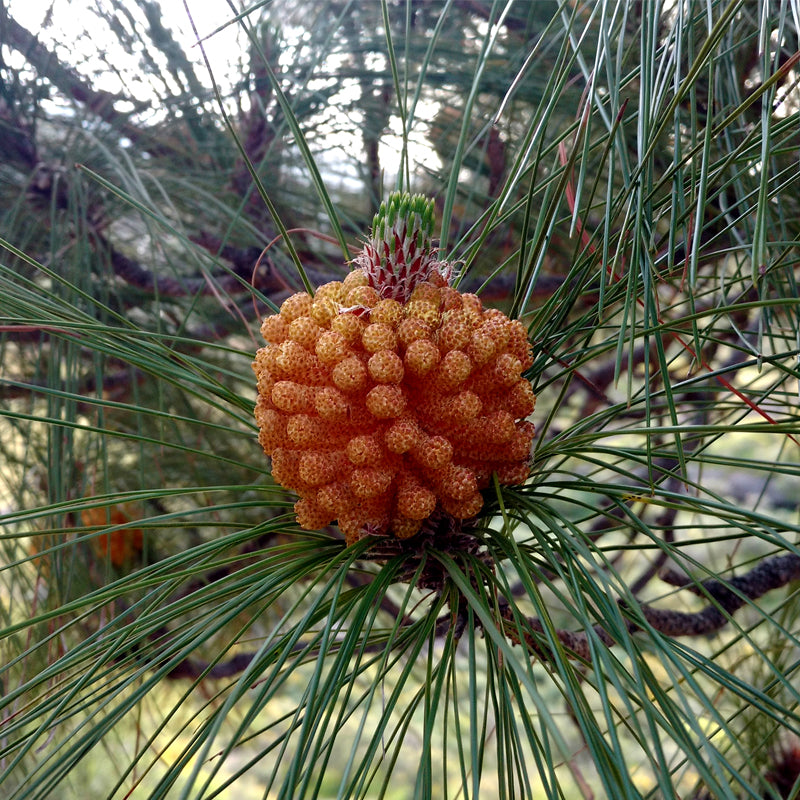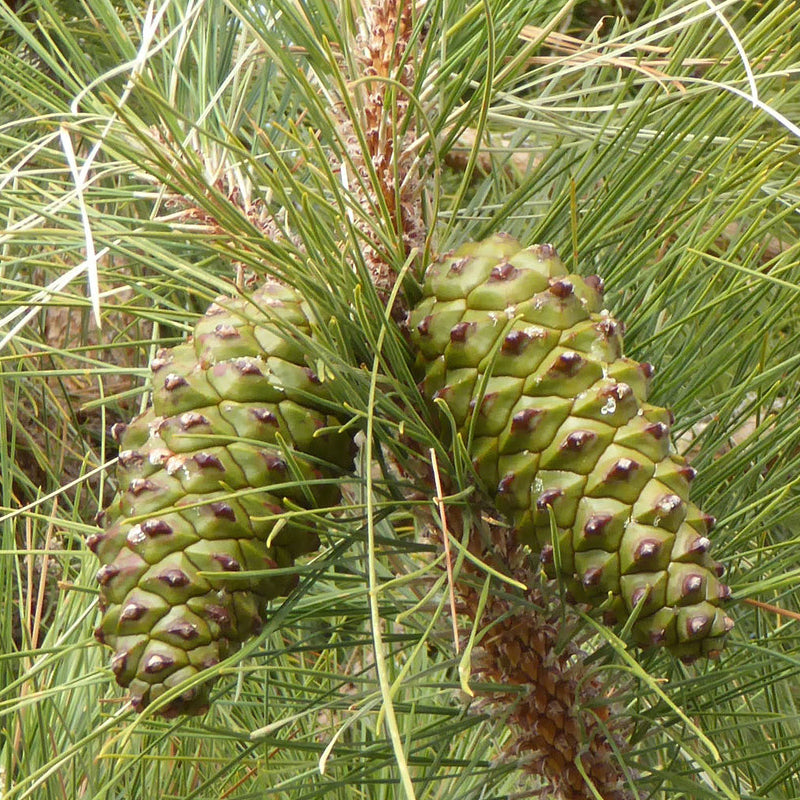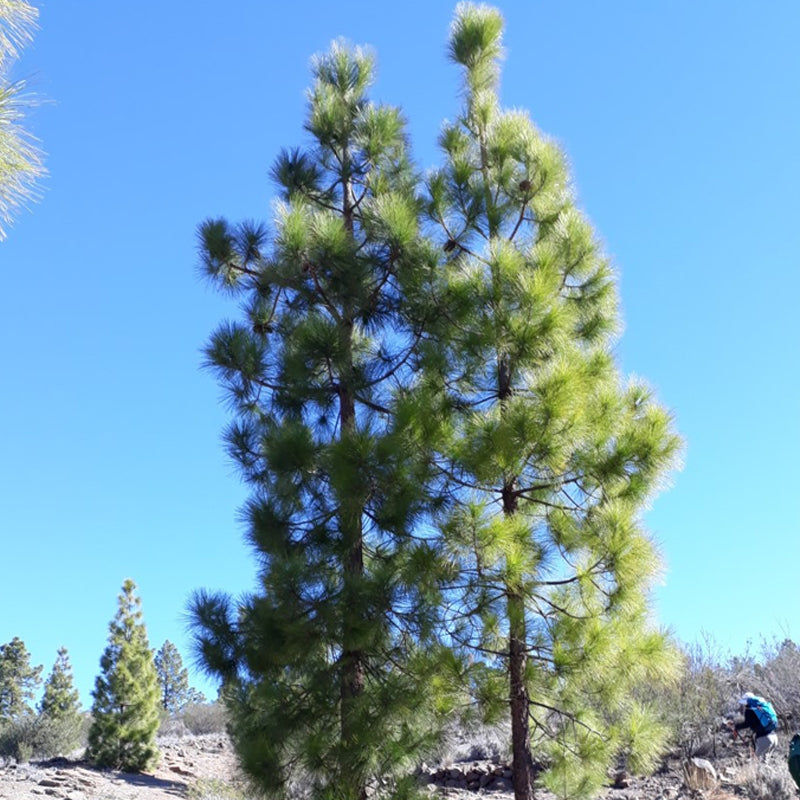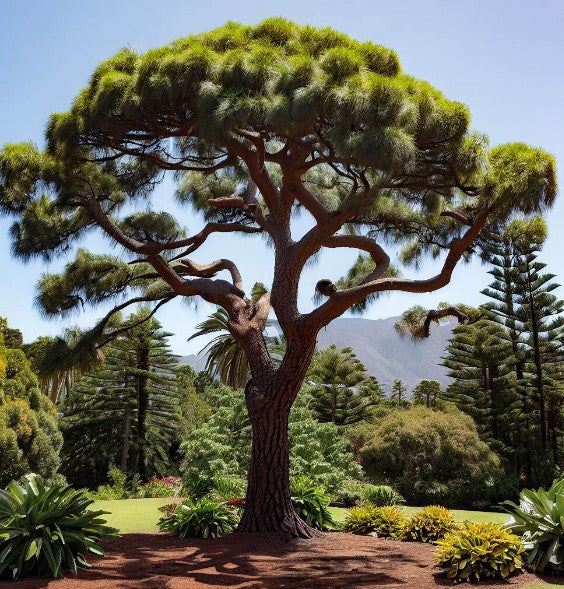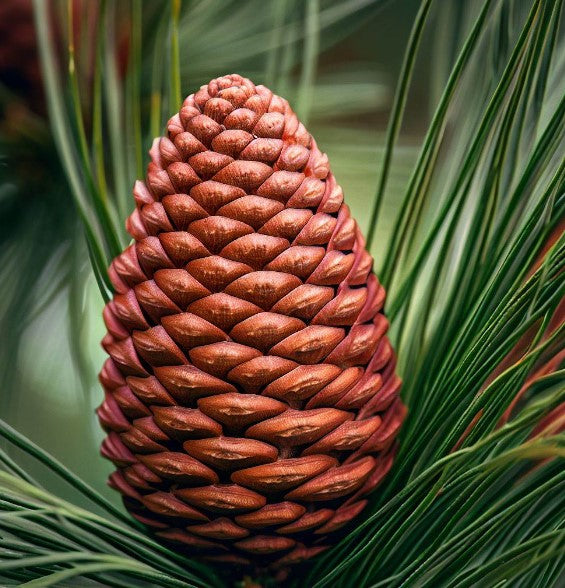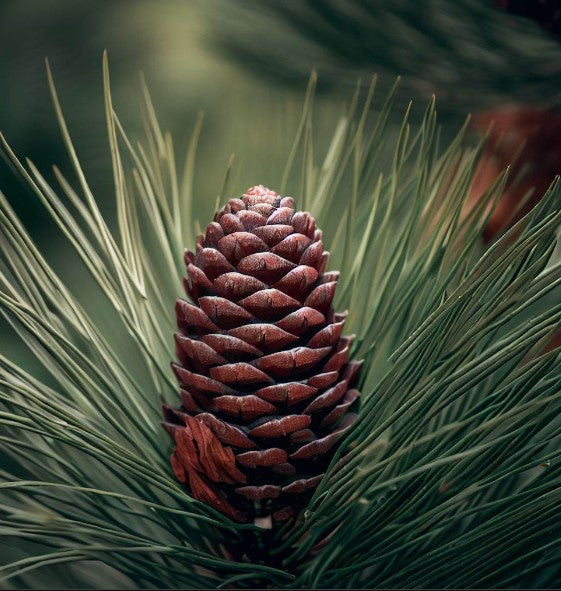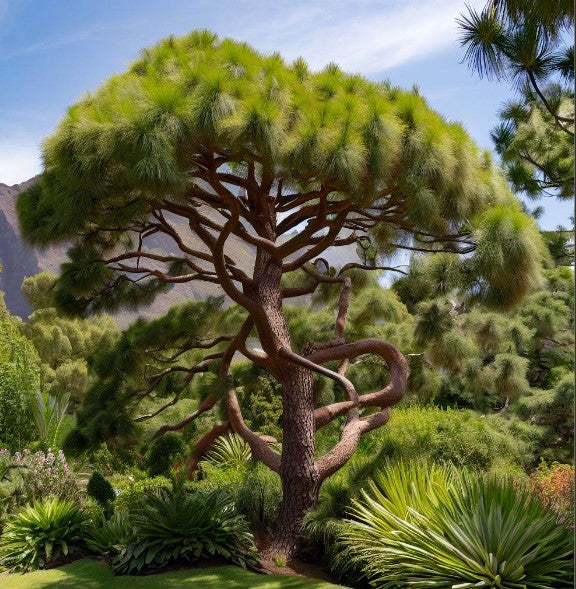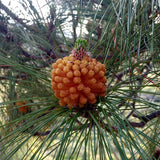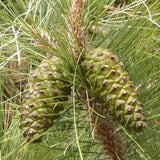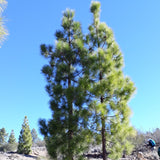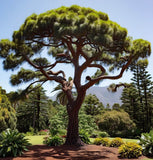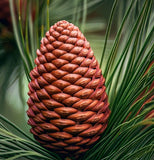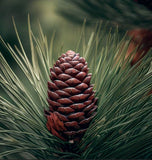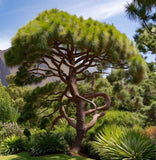Pinus canariensis (Canary Island Pine, Canary Pine)
Pinus canariensis (Canary Island Pine, Canary Pine) is a species of pine tree native to the Canary Islands, a Spanish archipelago off the northwest coast of Africa. It is a large evergreen conifer that is known for its impressive size and adaptability to various environmental conditions.
Size and Growth Habit: Canary Island Pine is a large tree that can reach heights of 30-40 meters (98-131 feet) or more, with a trunk diameter of up to 2 meters (6.5 feet). It has a straight trunk and a dense, rounded or umbrella-shaped crown. The branches are robust, often spreading horizontally.
Needles: The needles of Pinus canariensis are long and thick, measuring about 15-30 cm (6-12 inches) in length. They occur in bundles of three, are dark green in color, and have a slightly twisted appearance. The needles persist on the tree for several years before shedding.
Cones: The coNes of Canary Island Pine are large and elongated, typically measuring 10-20 cm (4-8 inches) in length. They have thick scales with a woody texture and are often curved or irregularly shaped. The cones mature from green to brown and release winged seeds that are dispersed by wind.
Habitat: Pinus canariensis is adapted to a variety of habitats, including coastal areas, lowlands, and mountainous regions. It thrives in Mediterranean-type climates with mild, wet winters and hot, dry summers. It can tolerate a wide range of soil types, including volcanic soils.
Uses: Canary Island Pine has both commercial and cultural uses. The timber of the tree is used in construction, furniture making, and as fuelwood. The tree is also valued for its ornamental qualities and is planted in parks, gardens, and urban areas for its aesthetic appeal.
Conservation Status: Pinus canariensis is not currently listed as a threatened or endangered species. However, like many tree species, it may face localized threats from habitat loss, wildfires, and the impacts of climate change. Conservation efforts are important to preserve the populations and habitats of Canary Island Pine.
Botanical Name : Pinus canariensis
Common Name : Canary Island Pine, Canary Pine
Height : 80-125ft
Spread : 40-50 ft
Germination Info : Seed does not require a pre-treatment
Hardiness zone : 8+
Average seed per ounce : Approx. 313

